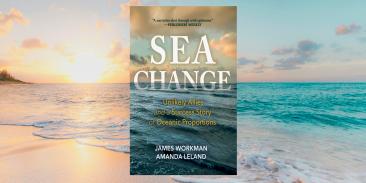Environmental Defense And EPA Agree To More Time To Finalize National Park Rule
(15 April 2005) Environmental Defense today agreed to modify a court-ordered consent decree by giving the U.S. Environmental Protection Agency until June 15, 2005 to issue final rules cutting haze air pollution in national parks. The rules were due today under a lawsuit Environmental Defense filed against the agency in 2003. The rules are required to cut haze air pollution in 156 protected national parks and wilderness areas, such as national treasures like Acadia, the Grand Canyon, Great Smokies, Mount Rainier, Rocky Mountain, Shenandoah, Yellowstone, and Yosemite national parks.
“Our national parks are a precious American legacy, and current pollution levels are threatening the health of park visitors, harming ecosystems and cloaking vistas in haze,” said Environmental Defense senior attorney Vickie Patton. “The nation needs a strong EPA program that protects national parks from harmful air pollution. We’re urging the EPA to take this extra time to develop clean air standards that in fact protect our national parks from harmful air pollution.”
The EPA guidelines now due on June 15 will help project 156 national parks by applying pollution controls on nitrogen oxides and sulfur dioxide pollution from 26 categories of industrial sources constructed between 1962 and 1977. The industrial sources include power plants, industrial boilers, smelters, refineries, chemical facilities, cement plants, and pulp and paper mills. States nationwide will use the guidelines to develop plans, due to EPA by December 2007, that demonstrate progress toward restoring natural visibility conditions.
According to data released by the National Park Service in February, national parks across the interior western United States - from Glacier in the north to Grand Canyon in the south - are suffering from worsening air pollution conditions or have shown no improvement over the past decade. In this region of the country, home to some of the nation’s premier national parks, worsening pollution levels have been recorded from 1994-2003 for the following indicators: the haziest days, ozone “smog” levels, nitrate concentrations and ammonium concentrations. See the National Park Service website at http://www2.nature.nps.gov/air/who/npsPerfMeasures.htm, click on “detailed results” and scroll down to Figures 2, 4, 6 and 7.
Environmental Defense, a leading national nonprofit organization, represents more than 400,000 members. Since 1967, Environmental Defense has linked science, economics, law and innovative private-sector partnerships to create breakthrough solutions to the most serious environmental problems.
www.environmentaldefense.org
<?xml:namespace prefix = o ns = “urn:schemas-microsoft-com:office:office” />
With more than 3 million members, Environmental Defense Fund creates transformational solutions to the most serious environmental problems. To do so, EDF links science, economics, law, and innovative private-sector partnerships to turn solutions into action. edf.org
Latest press releases
-
New Analysis Finds Indigenous Lands and Protected Areas Are Key in Slowing Deforestation; Without them Brazilian Amazon Forest Loss Would be 35% and Carbon Emissions 45% Higher
October 28, 2025 -
New Poll: Republicans, Democrats and Independents Strongly Oppose Weakening Chemical Safety Law
October 27, 2025 -
Court Rules New York Must Implement State Climate Law and Deliver Swift Action
October 24, 2025 -
EDF Goes to Court to Help Defend California Climate Risk Reporting Laws That Protect People from Financial Damage
October 24, 2025 -
Oregon Water Partnership Applauds Gov. Kotek’s Executive Order to Promote Resilience of Communities and Natural Working Lands and Waters
October 23, 2025 -
Community, Health and Environmental Groups Sue to Stop President Trump’s Unlawful Toxic Air Pollution Exemptions
October 22, 2025










